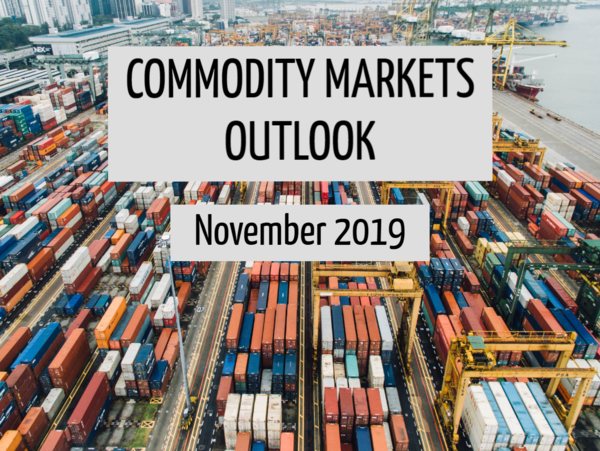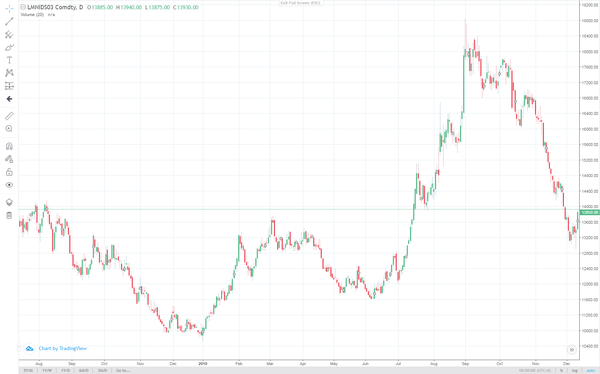Global Macro: Growth prospects for 2020 look more and more uncertain as central banks’ neutral stance is firming up, fiscal policy and trade talks are increasingly taking center stage for market sentiment. The recent market optimism has been overall bearish for gold (-3% on the month but still +12% YTD). Consumer spending (the usual end of cycle engine for growth) is going strongly, supported by private sector surplus and saving levels. On the micro side, profit margins are the biggest risk on the horizon and are being watched carefully. In China, the government is continuing to increase the loosening of monetary conditions while our GDP nowcast is forecasting a GDP below 6% for the first time.
Metals: Base metals complex was down, particularly nickel, following a strong reversal from this year’s peak earlier above 18’000 down to 13’500. The Indonesian export ban induced the initial rally, however the competition in China and Indonesia made both countries chase market shares at the expense of margin, creating surplus and reverting the price action. This configuration is representative of the competition between the Asian Peripheral economies and China.
View it on AlphaView: LMNIDS03 Comdty
Energy: OPEC discussions which occurred on the 5-6th of December were targeted around production cuts due to faltering demand growth. The organisation has managed to control the oil market extremely well given the change of the demand environment. Overcompliance of the Saudi’s quota has managed to keep the market in backwardation (their original intention) and the larger physical cut announced by the members makes it more likely that it will continue. Saudi Arabia’s threat to increase output if poor compliance is observed creates an asymmetric risk of reversal in the market on the downside. Such rhetoric, not used in the past, is also mounting pressure on all in the alliance, which with continued faltering demand would at some stage break. The focus is on the short term, and the clear intention to keep market inventories low may keep the market in backwardation while the entire curve risk moving down in case of economic slowdown. Excess capacity should be able to prevent sustainable price increase in 2020.
Agriculture: Grain markets were broadly unaffected by the US-China discussions on soybean exports (finished the month -5%, exports are showing weak numbers). Corn exports were also lower than expected, with limited uncertainty on the current harvest, prices were also lower.
Volatility: Volatility continued its downtrend throughout November for all asset classes. The equity sector was boosted by good economic numbers and optimism around a trade deal. VIX is down on the month from 13.22% to 12.62% while VSTOXX is down from 13.79% to 13.17%. Sentiment kept improving in precious metals. Gold implied volatility for ATM calls is down from 11% to 10% and for silver from 20% to 16%, both headed towards pre-summer levels. Volatility continued its drop in the agricultural sector as well, on the back of trade deal optimism, with corn implied volatility down from 17% to 14% and soybean from 12% to 11%. Crude implied volatility also had a slight drop, from 31% to 30%, with a pretty stable underlying price.
Source: Four Elements Capital


